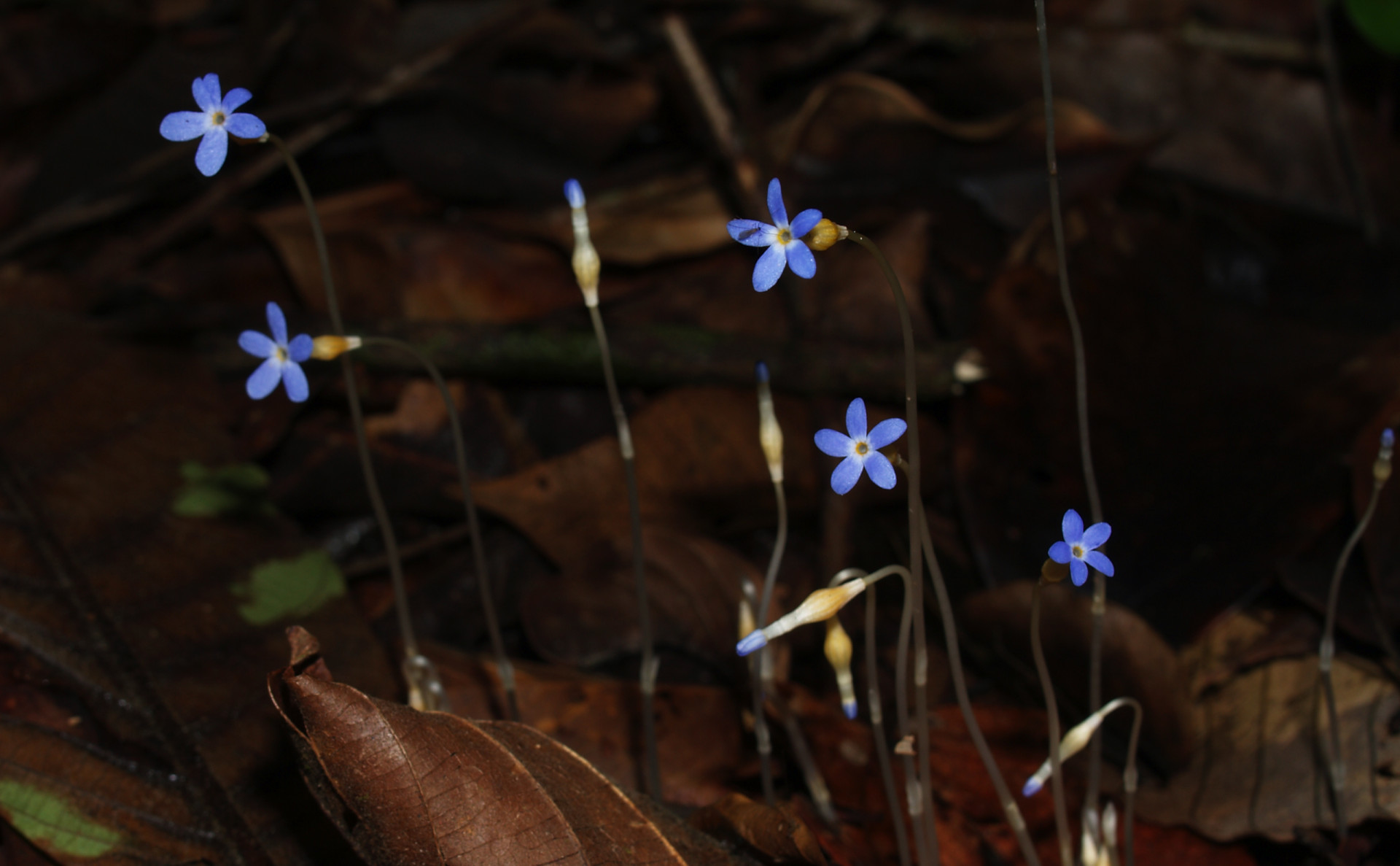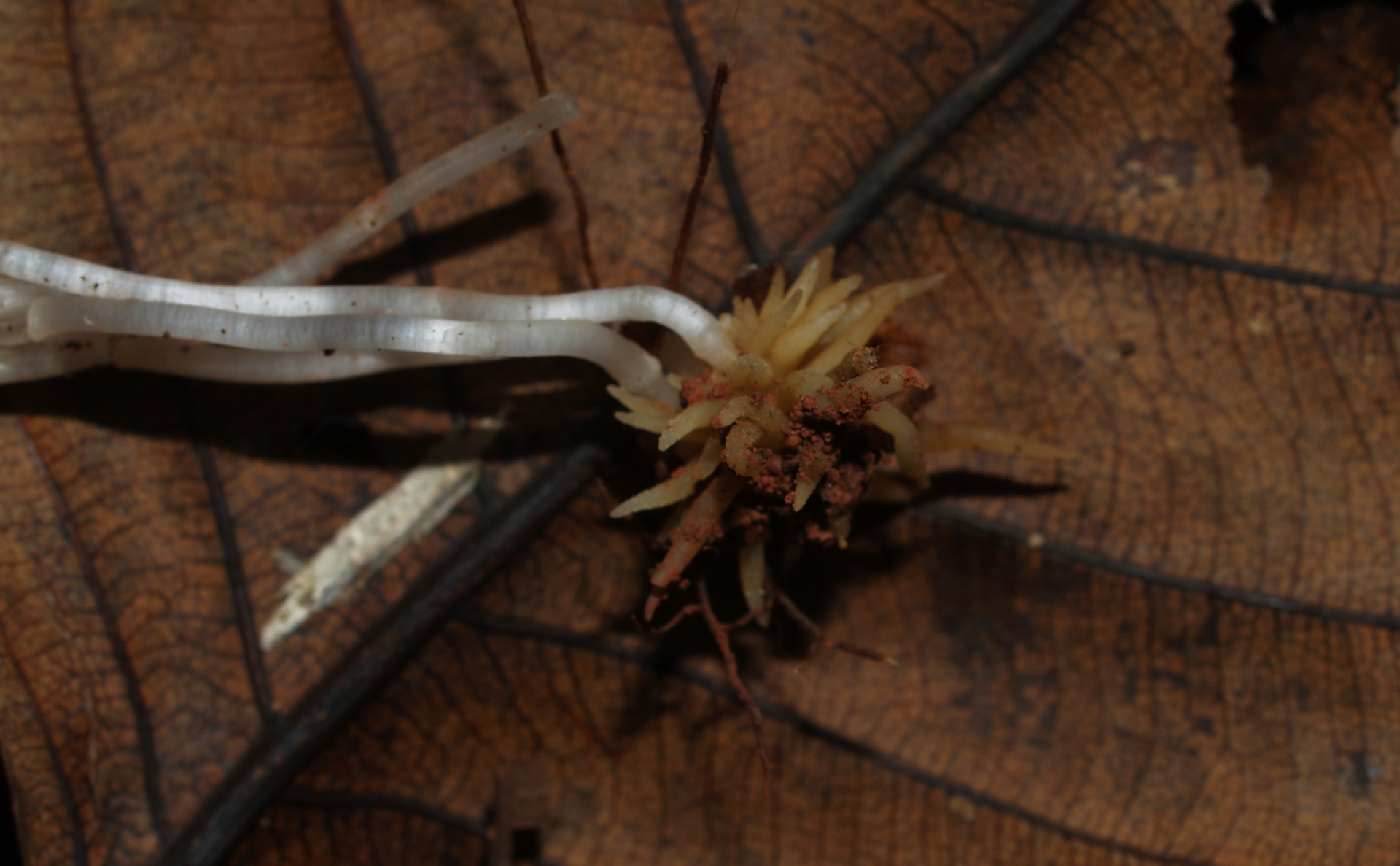An
underground
nutrient
market
Hacking the wood wide web
Gigante Peninsula, Panama
A disrupted mutualism sheds light on the dark web underneath the forest floor.
Tiny bluish flowers on translucent stems sprout almost impossibly from the dark brown forest floor. Unlike most of the plant kingdom, Voyria tenella cannot photosynthesize so it needs to get another plant to do the job. In this case, it saps carbohydrates from an intermediary: mycorrhizal soil fungi that channel nutrients to trees in return for carbohydrates produced by photosynthesis.
Voyria is a parasite that survives off the 'wood wide web,' an underground nutrient exchange where trees may be connected by fungal networks. "These plants demonstrate that there can be a meaningful transfer of carbohydrates from plant to plant because we know that Voyria can't get carbohydrates from anywhere else," said Merlin Sheldrake, a STRI predoctoral fellow who studies at Cambridge. The flower also sheds light on the mutualism it hacks.
On Panama's Gigante Peninsula, Sheldrake found Voyria does not grow on a forest plot experimentally enriched with phosphorous. This is likely because the trees rely less on fungi for phosphorus and go straight to the soil instead, while providing carbohydrates to fungi. The fungi, in turn, seem to cut off Voyria's carb supply entirely. By studying this disrupted mutualism's effects on trees (the cheaters), fungi (the cheated) and Voyria (the cheated cheater), Sheldrake aims to better understand the stability of the 400 million-year-old symbiosis between plants and their fungal partners.




